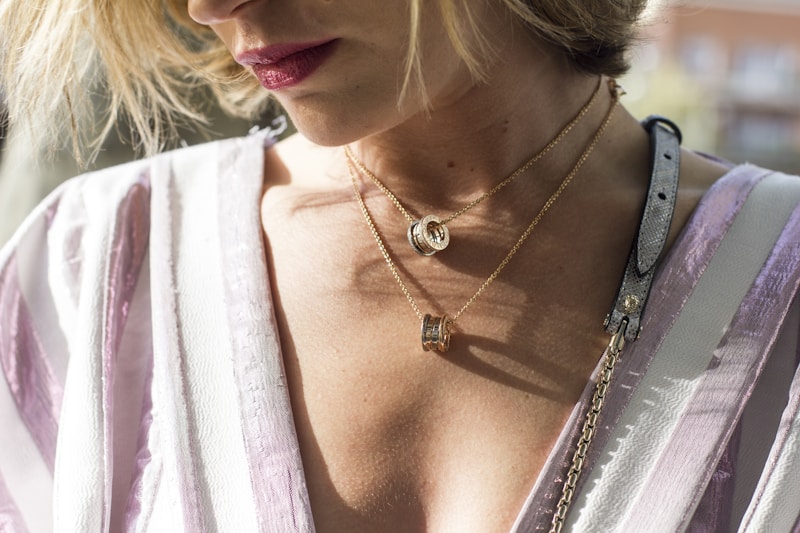Cultural Influences in Bridal Jewelry: A Global Perspective
Understanding the Rich Tapestry of Cultural Influences in Bridal Jewelry
Bridal jewelry is more than just adornments; it is a reflection of the cultural heritage and traditions that shape wedding ceremonies around the world. From the intricate designs of Indian bridal sets to the understated elegance of Western wedding bands, the cultural influences in bridal jewelry tell stories of love, identity, and history. This article delves deep into the various cultural factors that influence bridal jewelry designs across different regions while answering common queries about their significance.
The Importance of Cultural Context
Weddings are significant life events that are steeped in tradition. The jewelry worn on these special occasions often signifies various cultural values and historical narratives. Different cultures have unique customs that dictate the type of jewelry brides wear, the materials used, and the styles that prevail. Understanding these influences can help one appreciate the deeper meanings behind each piece.
Bridal Jewelry Across Cultures
Each culture boasts distinctive bridal jewelry styles, reflecting their history and ideologies. Here are some notable examples:
| Culture | Bridal Jewelry Style | Materials Used | Symbolism |
| Indian | Heavy necklaces, bangles, and maang tikka | Gold, diamonds, emeralds | Prosperity and good fortune |
| Western | Simple gold or platinum wedding bands | Gold, silver, and platinum | Eternal love and commitment |
| Chinese | Red glass bangles and gold jewelry | Gold, jade | Happiness and prosperity |
| Arab | Gold and diamond ensembles | Gold, silver, and gemstones | Honor and wealth |
Regional Variations in Bridal Jewelry
Indian Bridal Jewelry
In India, bridal jewelry is often ornate and extravagant. Brides typically adorn themselves with a myriad of gold pieces, including necklaces, earrings, and intricate headpieces known as maang tikka. The use of vibrant gemstones like rubies, emeralds, and diamonds is common, as each stone symbolizes various aspects of love and prosperity. The heavy use of gold in Indian culture is seen as a sign of wealth and status, further deepening the significance of bridal jewelry.
Western Wedding Bands
In the Western world, bridal jewelry often tends towards simplicity, with a focus on wedding bands and engagement rings. The tradition of exchanging rings symbolizes commitment and love. Platinum, gold, and diamonds are prevalent materials, each representing durability and strength. Many couples opt for custom designs, reflecting their unique journeys and shared lives, making the ring more than just a piece of jewelry; it's a testament to their bond.
Chinese Bridal Jewelry
In Chinese culture, red is considered a color of happiness and good fortune, often reflected in the jewelry worn by brides. Red glass bangles and gold jewelry are common, with gold being regarded as a symbol of wealth and prosperity. Additionally, jade is highly favored for its protective qualities, making it another popular choice among Chinese brides.
Arab Bridal Jewelry
Arab weddings are known for their luxurious displays, with bridal jewelry often reflecting the bride's family wealth. Gold and diamond necklaces, earrings, and bracelets are commonly worn, each piece painstakingly crafted to convey elegance and honor. The symbolism of the jewelry in Arab culture is profound, representing not only beauty but also the love and commitment shared between the couple.
Questions Often Asked About Bridal Jewelry
When exploring the cultural influences of bridal jewelry, several questions often arise:
What materials are traditional in bridal jewelry?
While gold is a staple in many cultures, the materials can range from diamonds and gemstones to contemporary alloys, depending on regional customs and the bride's personal preference.
How does cultural significance affect bridal jewelry design?
Cultural significance plays a crucial role in design elements such as color, material, and motifs. Every piece tells a story, often tied to ancient beliefs and values that have been passed down through generations.
Are there modern trends influencing traditional bridal jewelry?
Yes, many artisans blend traditional designs with modern styles, introducing unique elements that make bridal jewelry more personalized. Custom designs are rising in popularity, allowing brides to express their individuality while still honoring cultural traditions.
Sustainability in Bridal Jewelry
With growing concerns about ethical sourcing and environmental impact, sustainable practices in the bridal jewelry industry are becoming increasingly important. Many couples seek out jewelers who source conflict-free diamonds and use recycled materials to create their wedding bands. This shift towards sustainability not only respects cultural values but also promotes ethical consumption.
Conclusion and Considerations
Cultural influences in bridal jewelry are profound, offering a glimpse into the diverse celebrations of love and commitment across the globe. The piece you choose for your wedding day is steeped in history, tradition, and personal meaning. Whether it is the vibrant colors of Indian jewelry, the understated elegance of Western styles, or the rich traditions found in Arab and Chinese cultures, each piece contributes to the tapestry of your special day.
As you embark on your wedding journey, consider the cultural context of your bridal jewelry. Research the meanings behind various materials and designs, and don’t hesitate to incorporate your own unique touch to ensure your jewelry reflects your personal style and story. Practicing sustainability in your choices not only honors your culture but also contributes positively to the planet.
